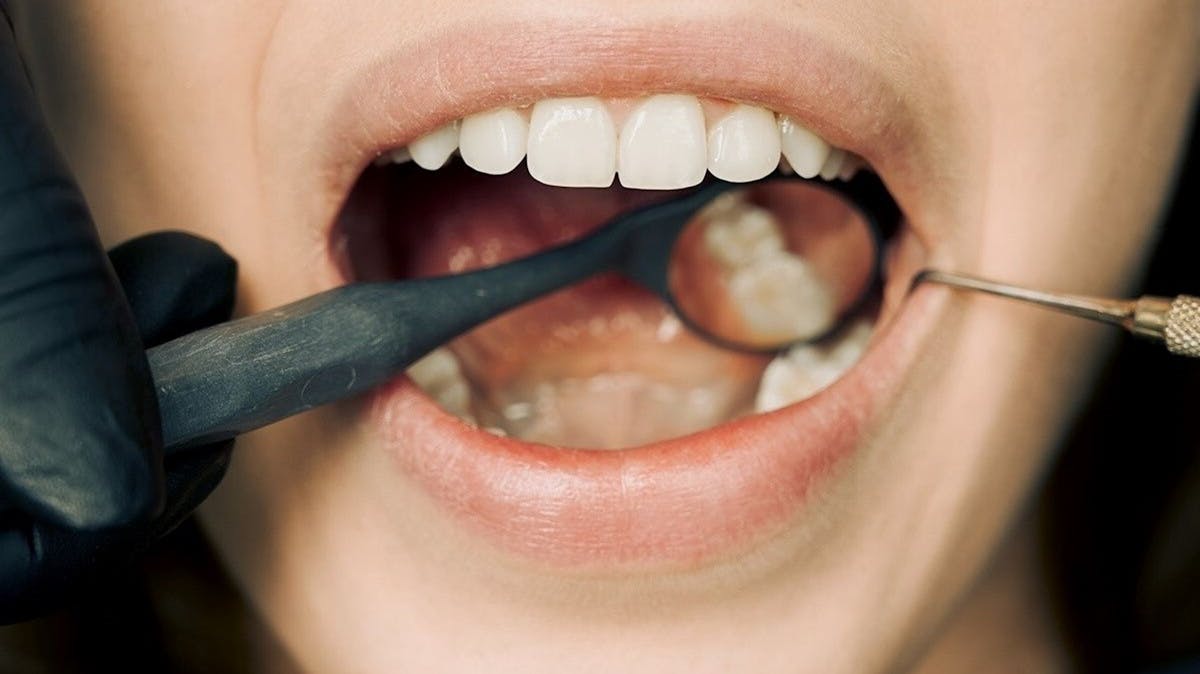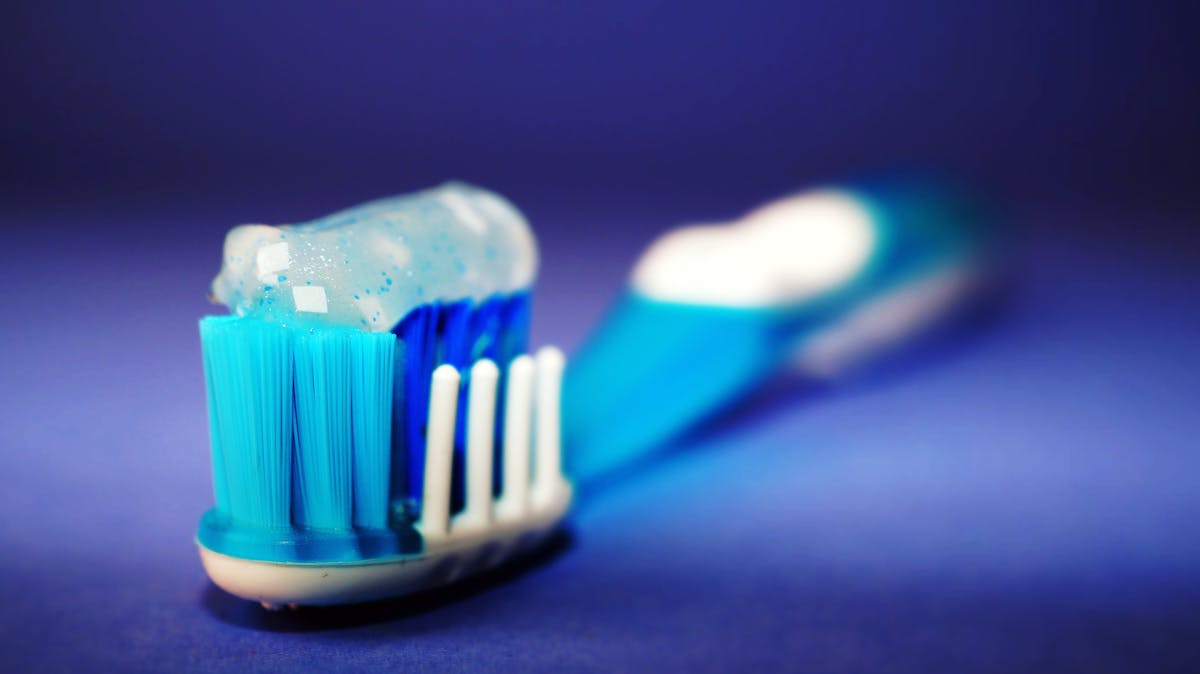Regularly swapping out your toothbrush is important for maintaining good oral health. The American Dental Association suggests replacing it every 3-4 months to guarantee maximum cleaning efficiency and prevent bacteria buildup. Indications it’s time for a new brush include bristles that are worn out, a forgotten replacement date, or prolonged use. Failing to replace it may result in infections, risks of plaque, and other oral health issues. Timely changes become more important during illnesses to prevent germ spread. By ensuring a fresh toothbrush, you greatly enhance your oral hygiene. Remember, a healthy smile starts with a simple toothbrush change.
When to Replace Your Toothbrush
When it comes to maintaining ideal oral health, knowing when to replace your toothbrush is crucial. The American Dental Association (ADA) suggests replacing your toothbrush every 3-4 months to guarantee effective cleaning. If you notice the bristles becoming frayed or worn out before this time, it is best to replace it sooner. Regularly changing your toothbrush helps prevent bacteria accumulation on the bristles, decreasing the risk of tooth decay and gum issues. Additionally, it is advisable to get a new toothbrush after being sick to prevent reintroducing harmful bacteria into your mouth.
Signs It’s Time for a New Toothbrush
Noticing the signs that indicate it’s time to replace your toothbrush is vital to maintaining excellent oral hygiene. One key sign to watch out for is frayed or spread-out bristles. When the bristles on your toothbrush are no longer straight, it’s a clear indication that a replacement is needed. If you find yourself struggling to recall the last time you switched out your toothbrush, it’s definitely time for a fresh one. Additionally, if your toothbrush has been in use for more than a few months, it’s advisable to replace it to uphold best oral health. Regularly replacing your toothbrush is essential as it helps prevent reintroducing bacteria into your mouth, thereby safeguarding your oral hygiene. By being attentive to these signs and ensuring timely replacements, you can effectively contribute to the overall health of your teeth and gums. Remember, regular dental cleanings and fluoride treatments are also key components of maintaining good oral health.
How Often to Replace Your Toothbrush
To maintain best oral hygiene, it is recommended by the ADA to replace your toothbrush every 3-4 months. Worn or frayed bristles can impede the cleaning effectiveness, while regular replacement helps prevent bacteria buildup. Ensuring your toothbrush is renewed at the right intervals plays an essential role in safeguarding your oral health.
Replacement Frequency
For maintaining best oral health, it is recommended by the American Dental Association to replace your toothbrush every 3-4 months. Regularly changing your toothbrush every few months is essential for effective oral hygiene. By swapping your toothbrush often, you can prevent bacteria buildup on the bristles, reducing the risk of infections. Worn-out bristles are less efficient at cleaning your teeth, which can lead to increased plaque and decay. It is important to pay attention to the condition of your toothbrush and consider replacing it sooner if you notice fraying or damage to guarantee proper cleaning. Additionally, after an illness, it is advisable to swap your toothbrush promptly to avoid reintroducing harmful bacteria into your mouth. By following these guidelines and replacing your toothbrush regularly, you can maintain good oral health and keep your smile bright and healthy.
Importance of Renewal
Frequently replacing your toothbrush is important for maintaining ideal oral health. To uphold best dental hygiene, it is recommended to swap out your toothbrush every 3-4 months. Regular renewal plays a vital role in preventing the accumulation of bacteria on the bristles, which can lead to infections and oral health issues. Over time, the bristles on an old toothbrush wear down, reducing their efficiency in removing plaque from teeth and gums. By changing your toothbrush after an illness, you can lower the risk of re-infection and maintain a healthy mouth. Following the American Dental Association’s guidelines for replacing your toothbrush ensures that you are consistently using a tool that can effectively clean your teeth and promote better oral health. By making toothbrush renewal a regular part of your dental routine, you contribute to the overall well-being of your gums, teeth, and mouth.
Impact of Neglect
Regularly replacing your toothbrush is essential for maintaining peak oral health. Neglecting to change your toothbrush can have a significant impact on your oral health, leading to various dental problems. Here are some consequences of neglecting to replace your toothbrush:
- Bacteria buildup: An old toothbrush harbors bacteria that can lead to infections and other oral health issues.
- Plaque removal: Worn-out bristles are less effective at removing plaque, which can increase the risk of cavities and gum disease.
- Oral health problems: Not replacing your toothbrush regularly can result in a range of oral health problems, affecting your overall well-being.
- Germs spread: Using a contaminated toothbrush can spread germs and bacteria in your mouth, potentially causing infections.
- Dental issues: Neglecting to change your toothbrush can contribute to the development of dental issues that may require professional intervention.
Factors That May Require More Frequent Replacement
When you’re sick with a flu or cold, it’s crucial to think about replacing your toothbrush more often to prevent the spread of germs. Individuals with weakened immune systems, like those undergoing chemotherapy, may find it advantageous to switch their toothbrushes more frequently to uphold good oral health. Timely toothbrush replacement can aid in decreasing the risk of infections and guarantee improved overall hygiene for your mouth.
Illness and Toothbrush Replacement
During times of illness, such as when you are battling the flu or a cold, your toothbrush can become a breeding ground for harmful bacteria. This can lead to potential infections and even reinfection, especially if you have a compromised immune system. To maintain excellent oral health, consider the following:
- Regularly replace your toothbrush after being sick to reduce the risk of spreading harmful bacteria.
- Individuals with weakened immune systems, like those undergoing chemotherapy, should be extra vigilant in changing their toothbrush to prevent infections.
- More frequent toothbrush replacement post-illness can help in avoiding reinfection and promoting better oral hygiene.
- Changing your toothbrush regularly is crucial for good oral health, particularly after a period of illness or when your immune system is compromised.
- Increasing the frequency of replacing your toothbrush is a simple yet effective way to prevent the spread of germs and maintain a healthy mouth.
Weakened Immune System Considerations
To maintain peak oral health, individuals with weakened immune systems, such as those undergoing chemotherapy or dealing with chronic illnesses, must pay particular attention to the frequency of replacing their toothbrush. When the immune system is compromised, the risk of bacterial contamination and infection is higher. Illnesses like flu or cold can weaken the immune system, making it essential to replace your toothbrush more frequently to prevent the reintroduction of bacteria into your mouth. Chemotherapy and other conditions that compromise the immune system require extra vigilance in maintaining excellent oral hygiene. Regularly changing your toothbrush, especially after being sick, can reduce the chances of spreading germs and help you uphold good oral health. As a result, individuals with weakened immune systems should prioritize the timely replacement of their toothbrushes to lower the risk of bacterial contamination, infections, and to maintain excellent oral hygiene.
Importance of Timely Changes
Requiring more frequent toothbrush replacements can greatly impact your oral health, especially in situations where factors such as illness or weakened immunity are present. When it comes to maintaining good oral hygiene, timely changes in your toothbrush are crucial. Here are some reasons why more frequent replacements are essential:
- Illness and weakened immune system increase the risk of spreading bacteria through your toothbrush.
- Chemotherapy patients need to replace their toothbrushes often to prevent infections and maintain oral health.
- Regularly changing your toothbrush helps reduce the reintroduction of harmful bacteria into your mouth, especially after being sick.
- More frequent replacements can lower the risk of plaque buildup and maintain better oral hygiene overall.
- Keeping your toothbrush fresh is essential for your immune system, ensuring you are not reintroducing harmful bacteria into your mouth.
How to Maintain Your Toothbrush Between Replacements
Maintaining your toothbrush between replacements is necessary for ensuring peak oral health. To keep your toothbrush in best condition, it is ideal to follow proper storage and cleaning practices. After each use, make sure to rinse your toothbrush thoroughly to remove any remaining toothpaste and debris. Storing your toothbrush upright in an open-air environment allows it to dry effectively, preventing the growth of harmful bacteria. Avoid using closed containers for storage, as they can trap moisture and promote bacterial proliferation. Allowing your toothbrush to air dry between uses is also beneficial in maintaining its cleanliness and effectiveness. By ensuring that your toothbrush is consistently cleaned and stored in the right manner, you can help preserve its hygiene and prevent the reintroduction of bacteria into your mouth. Following these simple steps, like utilizing advanced antiseptic procedures recommended by Kearns Family Dentistry, will not only extend the lifespan of your toothbrush but also contribute to better oral health outcomes.

The Importance of Replacing Your Toothbrush Regularly
Proper oral care involves more than just maintaining your toothbrush; it also requires regular replacement to ensure maximum cleanliness and effectiveness. Replacing your toothbrush regularly is crucial for your oral health. Here are some reasons why you should consider replacing your toothbrush often:
- A fresh toothbrush helps prevent plaque buildup and potential gum damage.
- Regularly replacing your toothbrush every 3-4 months reduces the risk of bacteria accumulation.
- Following the ADA recommendation of changing your toothbrush periodically can save you from costly dental issues.
- Replacing your toothbrush after being sick is essential to prevent re-infection.
- Keeping track of your toothbrush’s age and replacing it promptly ensures ideal oral health and hygiene.
Tips for Remembering to Replace Your Toothbrush
To guarantee you remember to replace your toothbrush on time, consider setting a recurring reminder on your phone or calendar every 3-4 months. Buying toothbrushes in bulk can help you stay prepared and make certain you always have a fresh one available. Try using visual cues like writing replacement dates on your toothbrush or storing it in a visible spot to prompt you when it’s time for a new one.
Reminder Techniques
Regularly changing your toothbrush is crucial for maintaining good oral health. To help you recall when it’s time to swap out your old toothbrush for a new one, here are some effective reminder techniques:
- Set a reminder on your phone or calendar to change your toothbrush every 3-4 months.
- Buy toothbrushes in bulk to guarantee you always have a fresh one on hand.
- Use visual cues like writing replacement dates on your toothbrush or visible storage to remember when to change it.
- Make sure you have a fresh toothbrush ready by staying on top of your replacement schedule.
- Stay consistent with your toothbrush replacement to maintain excellent oral health and prevent bacteria buildup.
Brush Replacement Frequency
Maintaining the frequency of replacing your toothbrush aligns with dental recommendations is crucial for upholding ideal oral hygiene. The American Dental Association (ADA) and dentists suggest changing your toothbrush every 3-4 months. To help you recall, consider setting reminders on your phone or calendar. Purchasing toothbrushes in bulk can also guarantee you always have a fresh one ready when needed. Additionally, using visual cues such as writing replacement dates on your toothbrush or storing it visibly can assist you in tracking when it’s time for a new one. By staying on top of your replacement schedule, you reduce the risk of plaque buildup and bacterial growth on your toothbrush, which can impact your oral health. Following these straightforward suggestions can support your efforts in maintaining a clean and healthy mouth.
Visual Cue Strategies
When it comes to maintaining peak oral health, incorporating visual cues into your routine can be a game-changer in making sure you remember to replace your toothbrush on time. Here are some strategies to help you stay on top of your toothbrush replacement schedule:
- Set reminders on your phone or calendar to replace your toothbrush every 3-4 months.
- Use visual cues like writing the replacement date on your toothbrush or its storage container.
- Purchase toothbrushes in bulk to guarantee you always have replacements on hand.
- Keep track of the last time you replaced your toothbrush to stay on schedule.
- Utilize visible storage for your toothbrush to serve as a reminder for when it’s time to replace it.
Impact of Not Changing Toothbrush
Have you ever paused to ponder the outcomes of not changing your toothbrush regularly? Neglecting to replace your toothbrush can have adverse effects on your oral health. As bristles on an old toothbrush weaken over time, they become less efficient at removing plaque, increasing the risk of cavities and gum disease. Bacteria can also accumulate on these worn bristles, potentially leading to re-infection after an illness.
To maintain peak oral hygiene, it is vital to adhere to the American Dental Association’s recommendations and replace your toothbrush every 3-4 months. By doing so, you optimize that your toothbrush remains effective in cleaning your teeth and gums, reducing the chances of bacterial buildup and associated oral health problems.
Regularly changing your toothbrush is a simple yet essential step in preventing cavities, gum disease, and bacterial accumulation. So, remember to replace your toothbrush regularly to safeguard your oral health and maintain a healthy smile.
Choosing the Right Toothbrush
Choosing the correct toothbrush is crucial for maintaining peak oral health. When it comes to selecting the right toothbrush, consider the following:
- Soft Bristles: Opt for a toothbrush with gentle bristles, as recommended by the American Dental Association, to protect your enamel during brushing.
- Proper Size: Make sure the toothbrush head size adequately covers 1-2 teeth for efficient cleaning.
- Electric vs. Manual: Personal preference plays a role in choosing between standard and electric toothbrushes, impacting effectiveness based on individual needs.
- Gum Health: Electric toothbrushes may offer superior gum cleaning compared to manual brushes, enhancing overall oral health.
- Professional Advice: Consulting with your dentist can help determine the best toothbrush for you, aligning with your unique oral health requirements.
Importance of Dental Hygiene Routine
To maintain peak oral health, it is essential to establish a consistent dental hygiene routine. Your routine should include daily brushing, flossing, and regular professional cleanings. By adhering to this regimen, you can prevent serious issues such as tooth decay and gum disease. Maintaining best oral health is not only crucial for your teeth and gums but also contributes to your overall well-being. Dentists highly recommend a consistent dental hygiene routine to ensure healthy teeth and gums. Regular dental check-ups with a family dentist are essential for preventive care and early detection of any potential problems. Plaque buildup, which can lead to gum disease, is effectively managed through a diligent dental hygiene routine. Remember that replacing your toothbrush regularly is just one part of the broader picture of maintaining good oral health. By prioritizing your dental hygiene routine, you are investing in a healthy smile and a healthier you.
Frequently Asked Questions
Why Is It Important to Change Your Toothbrush?
Replacing your toothbrush is crucial because of bacteria accumulation and reduced effectiveness. It affects oral hygiene and contamination risk. Your brushing habits are important for dental health. Guarantee a new brush to avoid frayed bristles and uphold peak oral health.
What Happens if You Don’t Change Your Toothbrush Regularly?
If you don’t change your toothbrush regularly, bacteria buildup, reduced effectiveness, frayed bristles, and plaque accumulation occur. Risk of infection, contamination concerns, and compromised oral hygiene increase. Changing every 3-4 months is essential for best dental health.
Does a Toothbrush Really Need to Be Replaced?
Yes, a toothbrush needs replacing. Bacteria buildup, decreased brush effectiveness, and hygiene concerns arise from not changing it. Frayed bristles and wear affect tooth decay and gum health. Regular replacement maintains oral hygiene.
What Happens if You Use the Same Toothbrush for Too Long?
Using the same toothbrush for too long can result in bacteria buildup, decreased effectiveness, frayed bristles, and oral health risks. Worn-out brushes lead to plaque accumulation, with germs spread easily. Regularly replacing your toothbrush is essential.

